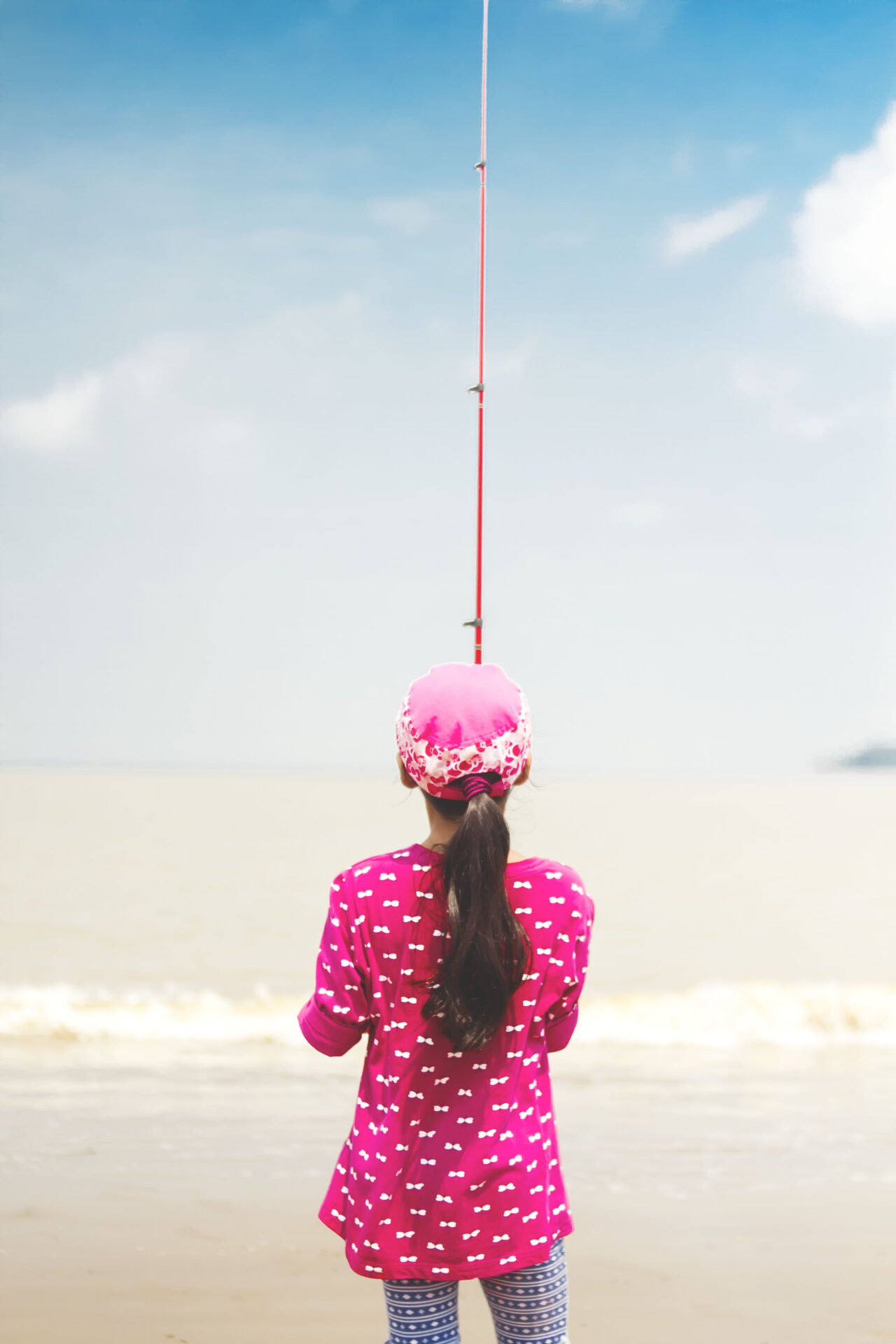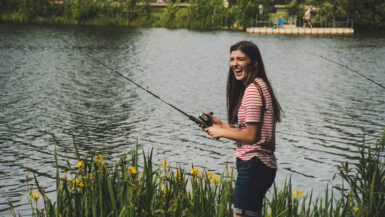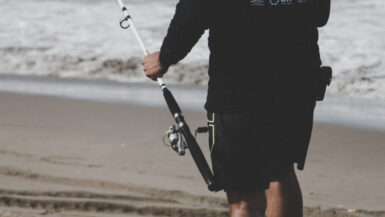The summer months are a great time for bass fishing. With longer days and warmer weather, there’s plenty of opportunity to catch bass. The key to successful bass fishing is to understand the habits of the fish and choose the right time of day to maximize your chances of success. In this article, we’ll discuss the best time of day to catch bass in the summer and provide tips on how to maximize your fishing experience.
Time of Day Considerations
Early morning hours – between dawn and sunrise – are the best time of day to catch bass in the summer. The reason is that during this time, bass are usually the most active. The combination of cooler water temperatures and the lack of light can make bass more aggressive and willing to bite. In addition, there are usually fewer anglers on the water in the early morning, so there’s less competition for anglers looking to catch bass.
Late Afternoon Hours
Late afternoon hours, between 3 pm and sunset, can also be a productive time for catching bass in the summer. During this time of day, the water temperature is typically at its warmest and bass are more prone to feeding. Bass will be more likely to venture out in search of an easy meal, making them more accessible to anglers. The only downside to fishing in the late afternoon is that there may be more anglers out on the water and more competition for bass.
Cooler Water Temperatures
Cooler water temperatures throughout the day can also make a difference in terms of bass fishing success. Water temperatures of around 70°F (21°C) or lower are usually best for bass fishing in the summertime. When the water temperature is warmer than that, bass will be less likely to feed and more likely to stay hidden in cooler, deeper waters. Cooler water temperatures can also help bass retain their energy, making them more likely to take a bait or lure.
Weather Conditions
Weather conditions also play a role in bass fishing in the summer. Overcast days are usually best, as the clouds can help keep the water cooler, providing bass with more comfortable conditions. Windy days can also be beneficial, as the movement of the water can attract more baitfish, which can in turn attract bass. On days with little to no wind, try to target areas of the lake or river with natural shade, such as overhanging trees or submerged logs, as these can provide the bass with some respite from the sun.
Structure and Cover
The structure and cover of a lake or river can also determine when and where bass might be more likely to feed. Bass are attracted to structure such as underwater humps, points, or drop-offs, as these provide them with a place to hide and ambush their prey. Bass will also be drawn to areas with heavy cover, such as vegetation, rocks, or fallen trees, as these can provide them with a place to hide from predators. Knowing where to find structure and cover can help anglers pinpoint the best spots to cast their lines.
Preferred Conditions
Bass fishing is best in the summer months when they are more likely to be found in shallow, warm areas. These areas can include coves and bays, around vegetation, and beside drop-offs, so anglers should identify the probable spots and plan their trips accordingly.
Temperature
In the summer, bass tend to become less active when the temperature drops below 68 degrees Fahrenheit. If the water exceeds 85 degrees, these fish will move deeper so that they can remain in a cooler environment. The best time for bass fishing is when the water temperature is between 68 and 85 degrees.
Time of Day
When it comes to the best time of day for bass fishing in the summer, early morning and late evening are the preferred conditions. The cooler temperatures in the morning and during the evening hours allow the bass to actively feed, increasing their chances of being seen by anglers. During the day, bass will typically hide in shady spots or deeper water, making them more difficult to locate.
Techniques
When fishing for bass in the summer, anglers should employ a variety of techniques. Casting lures, such as crank baits, spinner baits, and soft plastics, is an effective method as bass can be caught in shallow water. Additionally, drop-shot rigs and jigs can be used to target bass that are hiding in deeper water. Some anglers also have luck trolling with crankbaits and spinnerbaits.
Moon and Tide Cycle
The moon and tide cycle may also influence the success of bass fishing in the summer. During the new and full moons, bass will likely be more active due to the increase in activity of their prey species. Additionally, bass will be more active during times of high tide, when the water becomes deeper due to the increase in water level. Low tide may also be a good time to target bass, as they will likely be in shallower water searching for food.
Preferred Bait
Summer is the perfect time to catch bass, and the best time to fish is during the peak bite periods. Anglers should plan to arrive at the fishing spot early in the morning or late in the evening, as these are typically the most productive times. During the day, anglers should look for shade and points where the bass can find shelter from the sun.
Types of Baits to Use
When fishing for bass during the summer, anglers should use lures or baits that will entice the fish. Topwater lures, crankbaits, and soft plastic baits are all good options for bass fishing. Additionally, artificial flies and live bait like minnows, worms, or crawfish can also be used.
Preferred Bait
Of all the fishing methods, the most effective is to use live bait. Live bait offers natural presentation, attractive odors, and realistic movement that draw bass in. Live worms, crawfish, shad, and minnows are all effective baits for bass fishing in the summer months. It is best to use bait that is native to the area, so anglers should research the local water conditions before heading out.
Choose the Right Lures
When choosing the right lures, anglers should consider the water clarity, season, and local fish activity. Dark-colored lures tend to be effective in murky water, while brighter colors can be used in clear lakes and rivers. It is also important to select lures that resemble the local or regional baitfish in the area.
Locate Bass
Bass tend to feed in certain areas during the summer, so it is important to locate these spots. Look for deep holes, structure, and shady areas, as these are some of the most common places bass will hide during the summer. Additionally, anglers should utilize sonar and GPS to locate deep drop-offs and current breaks that may hold feeding bass.
Location Tips
When it comes to bass fishing in the summertime, the most important step is to identify locations that are friendly to bass. Look for areas with low light, and plenty of shade, such as docks, boat houses, or a rocky shore. You’ll also want to find spots with plenty of food sources, such as crawfish and baitfish. Once you have identified good bass fishing spots, it’s time to determine when the best time of day to catch bass is.
Look for Signs of Activity
The best time of day to catch bass can be identified by keeping an eye out for signs of activity. Look out for bass swimming near the surface, jumping out of the water, or coming to the surface to feed. This can indicate that bass are actively feeding and that this is a good time for fishing.
Try Fishing in the Evening
When it comes to catching bass in the summertime, the evening is often the best time of day. As the sun goes down, bass will start to feed more aggressively, and this can mean more successful fishing trips. When it comes to bass fishing in the summertime, the best time of day is usually the evening when the sun is setting.
Take Advantage of Early Morning Hours
In addition to the evening, early morning can also be a great time to catch bass. During the night, bass will be more active as they prepare to feed in the morning. In the early hours of the morning, bass will be actively feeding and can often be caught in greater numbers.
Be Prepared for Weather Changes
When fishing for bass in the summertime, it is important to be aware of the weather. If the weather is hot and sunny, bass may be less active during the day, but they will pick up their activity levels as the evening approaches. If the weather is cloudy or cool, bass may remain active throughout the day. Regardless of the weather, it’s important to be ready to adjust your strategy depending on the conditions.
Use the Right Gear
If you want to maximize your success when fishing for bass in the summertime, it’s important to use the right gear. Use different baits and lures to attract the bass, and be sure to use the appropriate techniques for each situation. When you have the right gear and techniques, you can make the most of your fishing trips and increase your chances of catching bass.
Maintenance of the Catch
Fishing for bass in the summertime can be a very enjoyable activity, with the right preparation. Before heading out to the lake or pond, it is important to inspect your fishing gear to make sure everything is in good condition. This includes lures, hooks, weights, line, and rods. Check for any nicks, cuts, or fraying of the line, as well as any signs of damage or wear. Make sure the lures and hooks are in good condition and have a sharp point for better penetration.
Replacing Fishing Line and Lures
It is also important to replace our fishing line and lures as needed. Having a sharp hook and strong line is necessary for successful bass fishing in the summertime. Over time, fishing line can become weak and break, which will not catch any fish. While lures can be effective for a while, they can become dull with repeated use, and should be replaced when needed.
Storing Tackle Box
To be sure that your fishing gear is ready to go on your next trip, it is important to properly store your tackle box. When not in use, keep all equipment in a dry place away from extreme temperatures. Wipe down all the lures and hooks to prevent rusting and store the tackle box in a cool place. This will help to prevent any damage to the equipment.
Cleaning the Reel
Maintaining your reel is an important part of bass fishing. After a fishing outing, make sure to clean and lubricate the reel to remove any dirt or saltwater. This will help to keep it in good condition and prevent any rusting or corrosion. Also check for any knots or tangles in the line and make sure the line is in good condition.
Check the Fishing Conditions
Before heading out for the day, it is always a good idea to check the fishing conditions. Research the water temperature, study the weather, and observe the movements of the fish. All of these elements can help you determine the best time of day to catch bass in the summer. By doing this research, you will be able to make the most out of your fishing trip and have a successful outing.
Conclusion of Best Time of Day to Catch Bass in the Summer
In conclusion, the best time of day to catch bass in the summer is typically early morning or late evening, when the sun is at its lowest. The bass are more likely to bite during these times when the water is cooler, and the fish are more active. Of course, the best time can change depending on the conditions, so you may need to adjust your strategy accordingly. Regardless, it would be wise to focus on the early morning and late evening as the prime times for catching bass during the summer months.





Leave a reply